The Art Gallery and Museum provides fun and interactive learning programmes to suit school groups of all ages. School visits are tailored to meet the needs of students through facilitated discussions, hands-on activities and engagement with real experiences. Contact our educator to book your visit.
What's on this term
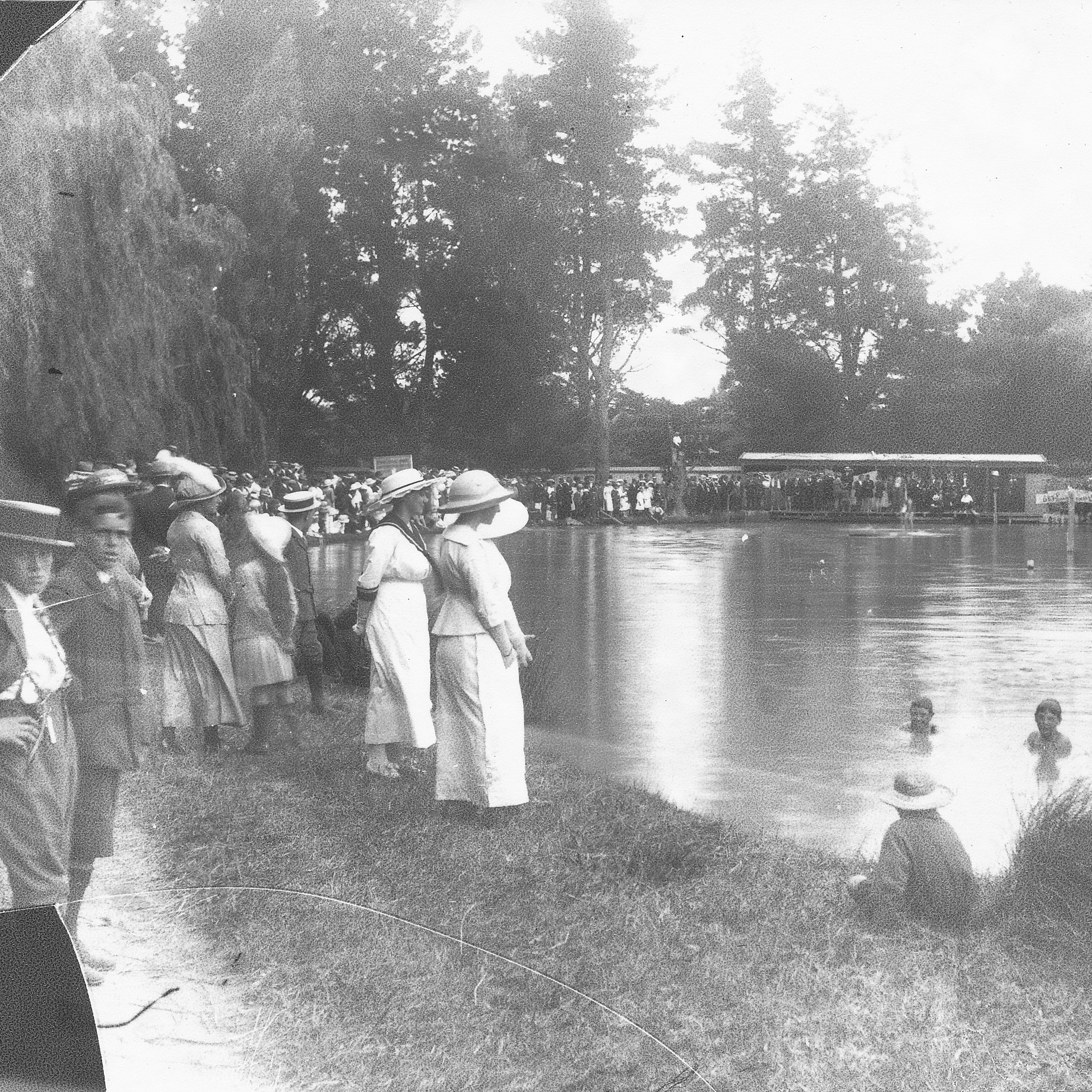
160 years of the Ashburton Domain
Exhibition: 160 years of the Ashburton Domain
Curriculum Links: Social Science, History
Dates: 27 July – 31 October (Term 3 Week 2 - Term 4 Week 3)
Time: 60-90 minutes
Grandly named The Grange on Ashburton's first map in 1864, this fenced off area designated for recreation was largely indistinguishable from the untouched countryside around it. It wasn’t until 1877 when a newly appointed gardener began a systematic programme of planting that the area began to develop. Today known as the Ashburton Domain, it has evolved into a versatile and much loved recreational area for our town. In this exhibition, objects, archives and photographs will explore some of the tales associated with the Domain's 160 year history.
Tūhura | Explore The significant and varied history of the Ashburton Domain
Ako | Learn About how this landscape has grown and developed alongside the recreational wants and needs of Ashburtonians
Field Trip | Explore the Domain through a Then and Now Tour of areas where activities and important events took place
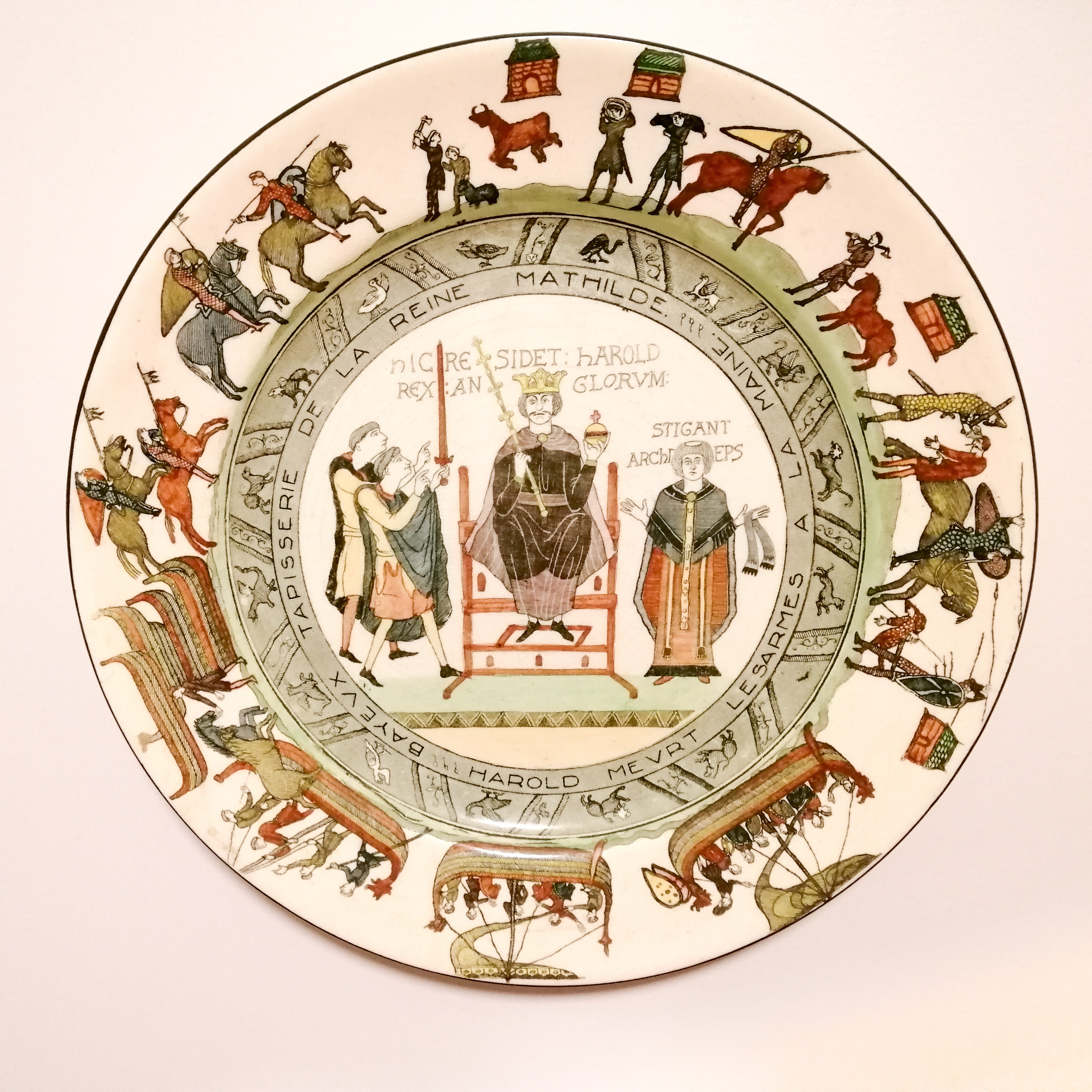
Seriously Valuable Art
Exhibition: Seriously Valuable Art
Curriculum Links: Visual Art, Economics, Drama
Dates: 10 August – 13 October (Term 3 Week 4 - Term 3 Week 10)
Time: 60-90 minutes
Seriously Valuable Art has one major rule: no single object should have either originally cost or be currently worth over $500. Its aim is to show how a collection of beautiful art can be built without paying the astronomical prices that it fetches on today’s market. However, there is one artwork snuck into the mix that is worth more than everything else put together. Try to guess which one it is!
Tūhura | Explore This art collection and discuss how it was acquired
Ako | Learn About how the value of an artwork is determined
Waihanga | Create Ākonga will partake in a mock art auction

Mana Māna, Kim Ireland
Exhibition: Mana Māna
Curriculum Links: Visual Arts
Dates: 10 August – 13 October (Term 3 Week 4 - Term 3 Week 10)
Time: 60-90 minutes
In this new series of work, Kim Ireland utilises uku (clay) to produce a variety of forms that refer back to the natural shapes of the gourd in growth. It is to mana wāhine atua (powerful women deities) that Ireland looks to in challenging times. Just as these works come directly from the whenua, they remind us that this is also the ultimate origins of people. As vessels for pūrakau (stories), they hold wisdom that the atua offer.
Tūhura | Explore The way in which pūrakau and the wisdom of atua have been combined in works that come from the whenua
Ako | Learn About how natural materials have been used to create artworks and objects throughout history
Waihanga | Create A natural shaped uku sculpture inspired by the works in this exhibition
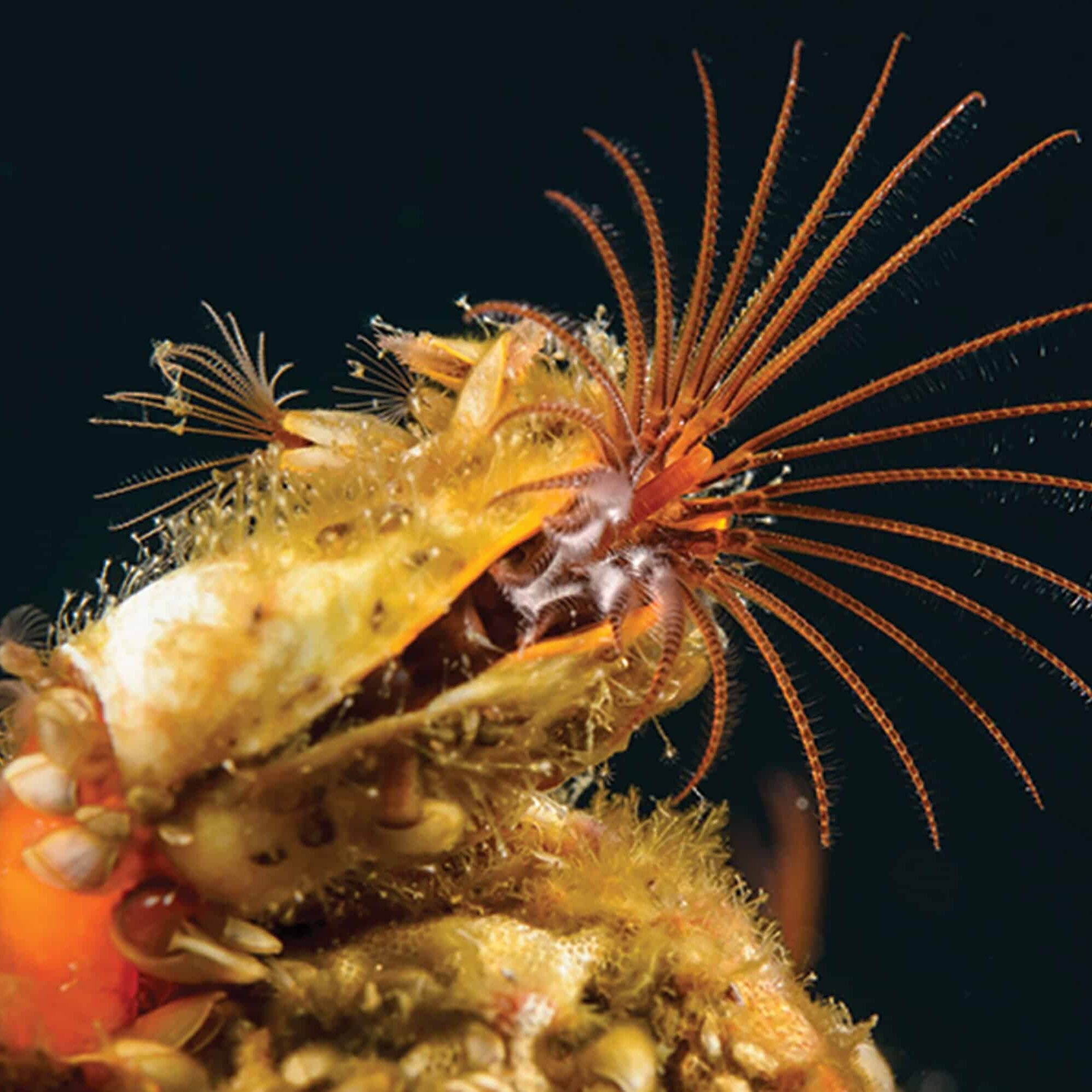
Clever Crustaceans
Exhibition: Clever Crustaceans
Curriculum Links: Science
Dates: 28 September – 24 November (Term 3 Week 10 - Term 4 Week 6)
Time: 60-90 minutes
Crabs, lobsters, shrimp – they’re Aotearoa New Zealand’s most famous crustaceans. Now meet the wider gang, from barnacles with superglue to slaters in the backyard. Explore the unique features of five marine crustaceans, and take a dive into their world. Discover these crustaceans’ smart survival tricks in a mini exhibition with real specimens and hands-on interactives, created by Museum of New Zealand Te Papa Tongarewa in collaboration with NIWA Taihoro Nukurangi.
Tūhura | Explore The variety of unique and fascinating creatures in our oceans
Ako | Learn About how crustaceans' brains and bodies function together
Waihanga | Create A moving split pin puppet based on crustacean features
Image | Goose Barnacle Lepas anatifera with cirri extended to catch planktonic food. Image by SeacologyNZ
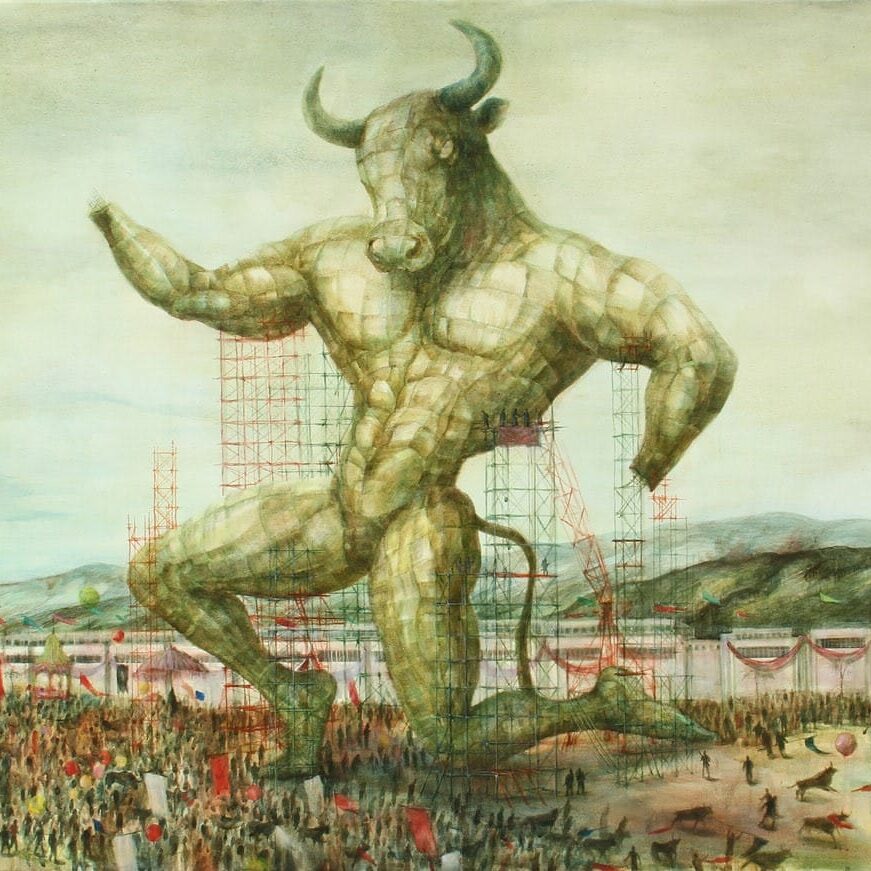
Solo exhibition, Jenna Packer
Exhibition: Solo exhibition, Jenna Packer
Curriculum Links: Visual Art
Dates: 28 October – 01 December (Term 4 Week 3 - Term 4 Week 7)
Time: 60-90 minutes
Jenna Packer’s work looks to the various structures that shape the lives of people – social, political, religious and economic – and the tension that occurs within or between them. In this exhibition she looks back at over a decade of utilising the bull as a symbol, one commonly associated with free market economics: the logos of financial companies, the bull statue at Wall Street, or the term ‘bull market’. Packer’s work incorporates this symbol as a literal structure; as monoliths built by speculative future societies, or as totems encountered in an imagined past. It alludes to the power that symbols also have in shaping societies, and how they accrue meaning across time and context.
Tūhura | Explore The symbolism in these works used to present alternative social and colonial histories
Ako | Learn How to create metaphors for things that are important to us, through a series of activities
Waihanga | Create A sculpture that reflects the personal metaphor created

Paua Play, Jane Venis
Exhibition: Paua Play, Jane Venis
Curriculum Links: Visual Art, Music, History
Dates: 28 October – 01 December (Term 4 Week 3 - Term 4 Week 7)
Time: 60-90 minutes
For this exhibition, Jane Venis has hand-built a variety of instruments that incorporate the culturally potent material of pāua shell. Both the ukelele and pāua have been historically devalued within the Pacific – sold as cheap and kitschy tourist souvenirs, which has exploited their status as taonga for their respective cultures. Here, Jane combines the two to produce contemporary Kiwiana, and along with other instruments, forms an ensemble that evaluates where the line might lie between trinket and treasure.
Tūhura | Explore The history of paua and ukelele as taonga
Ako | Learn About Pacific sound and the features of instruments
Waihanga | Create Musical instruments to play as a class band
Permanent programmes

Hakatere Ashburton History
A skim through the evolution of the district since the beginning of time.
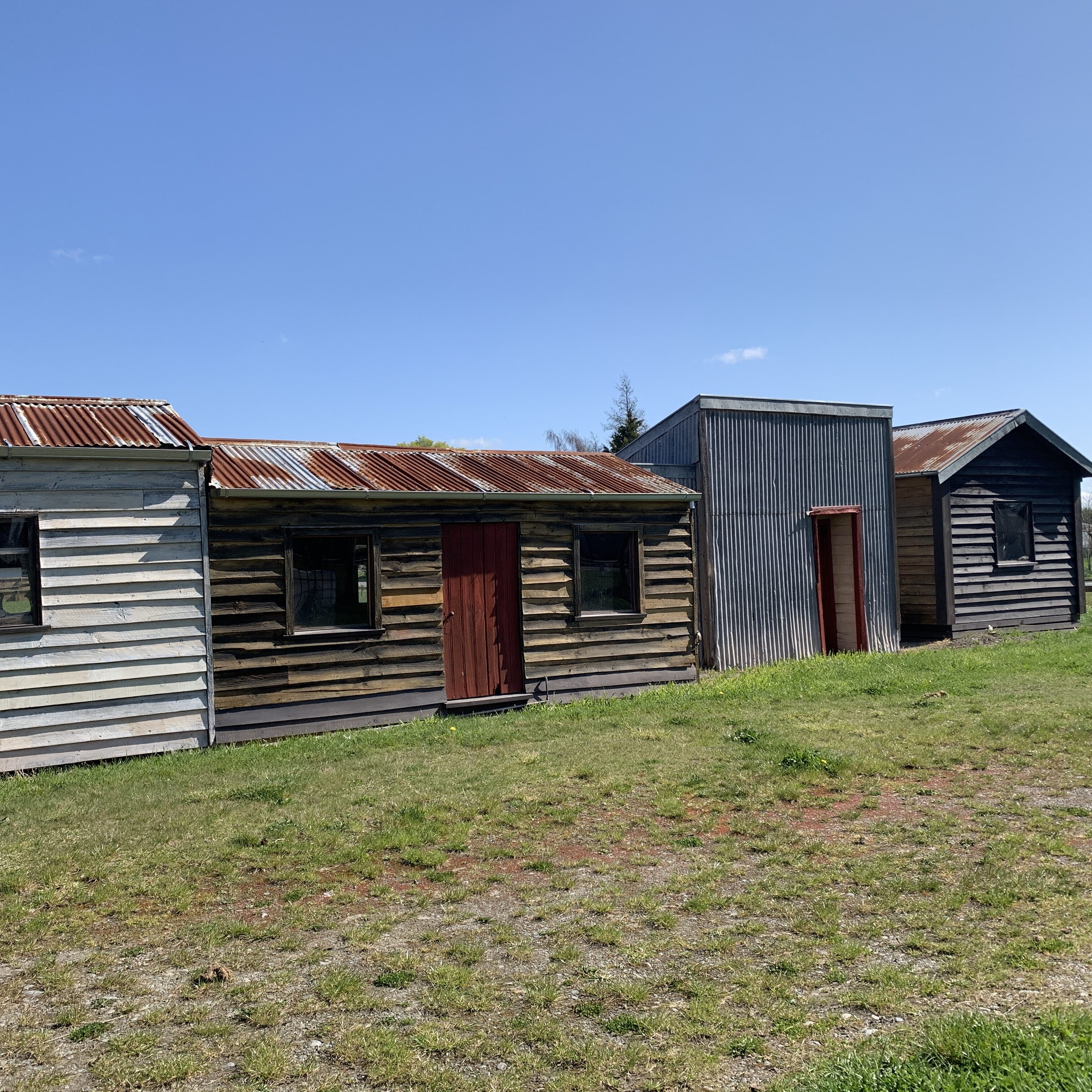
Ng King Bros. Chinese Market Gardens
A new opportunity to visit and learn about life at the Ng King Brothers Chinese Market Garden Settlement.
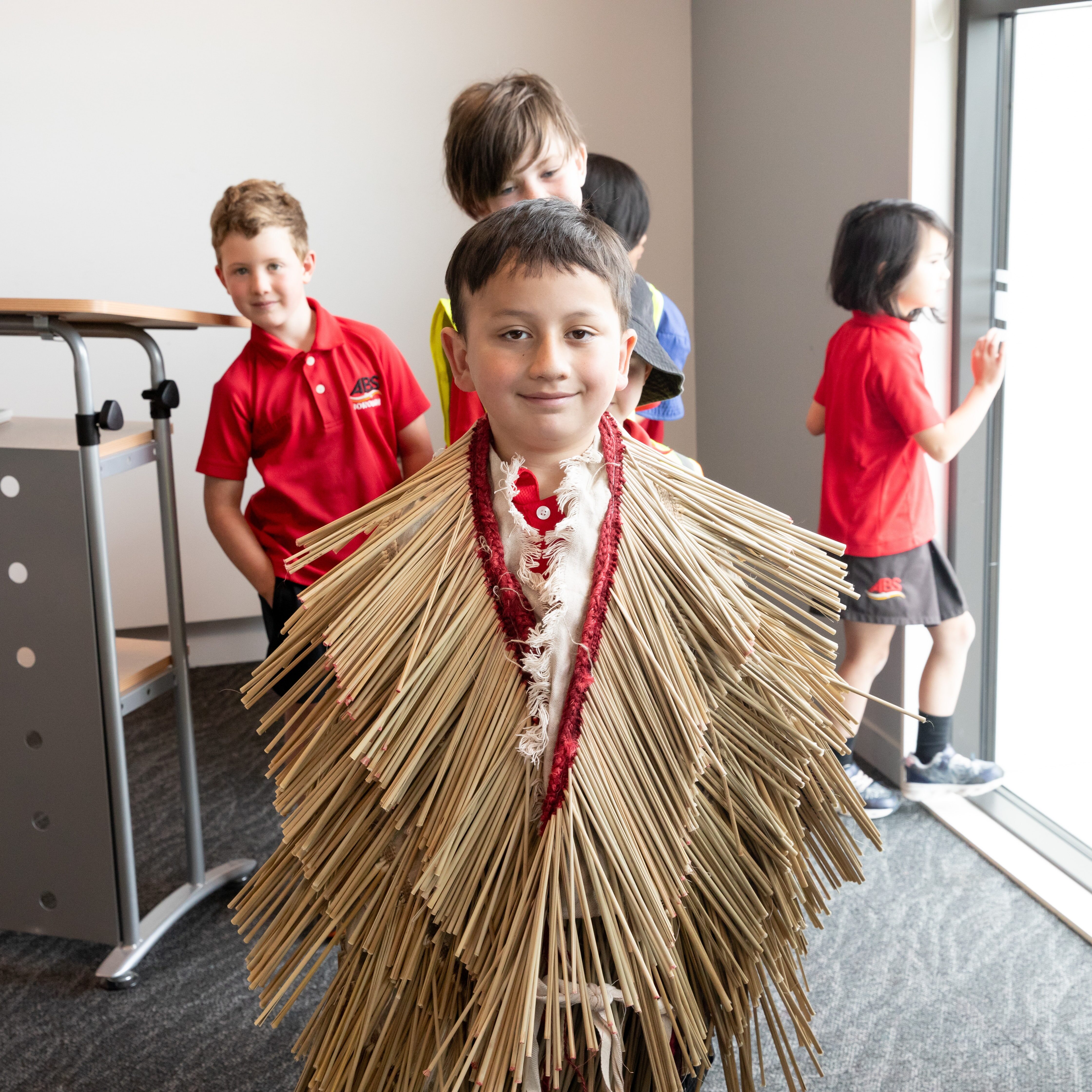
Living on the Land: Tākata Whenua o Hakatere
Learn about the area as it was used by tākata whenua. Explore mahika kai, tools and aspects of living.
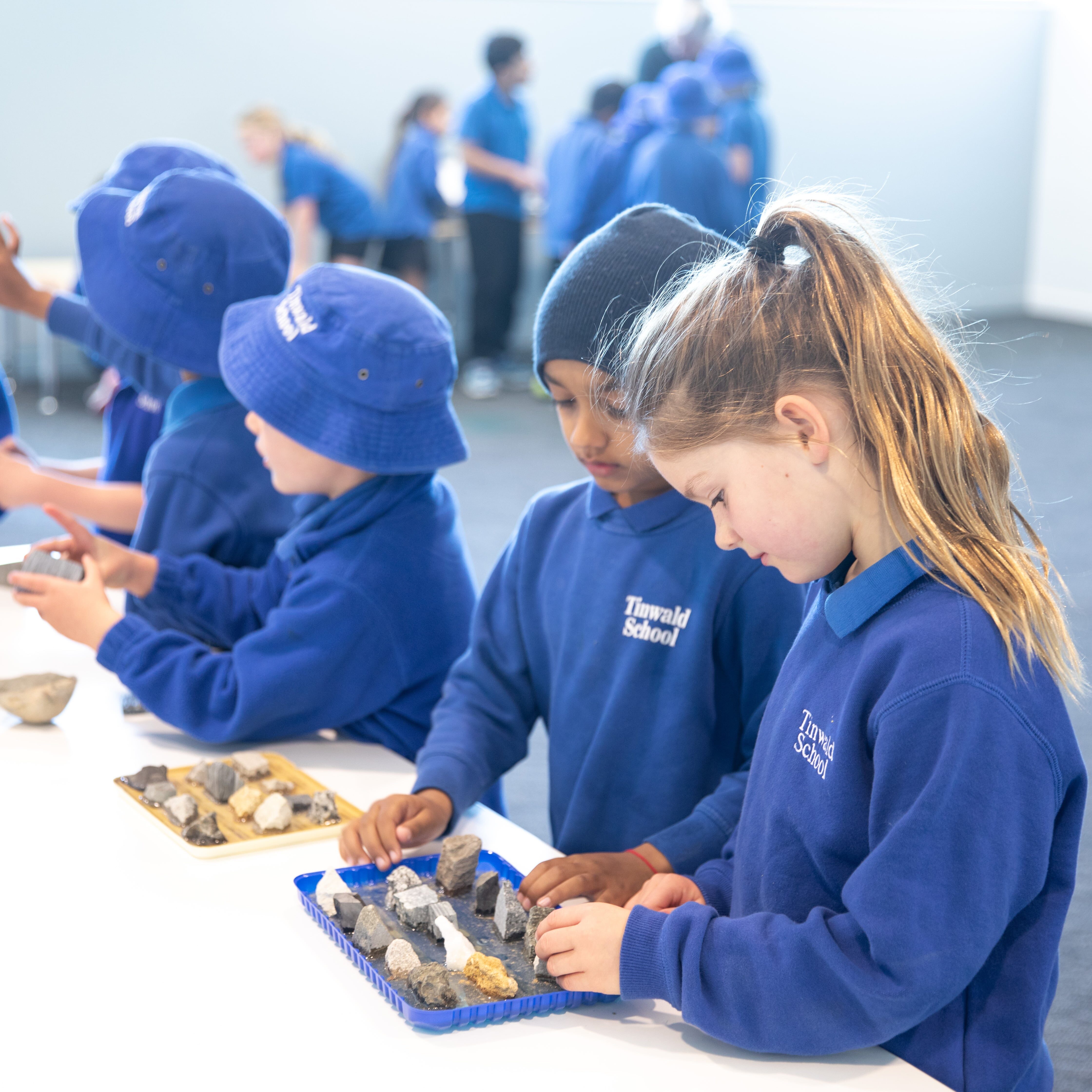
Mountains to Sea
From the Kā Tiritiri o te Moana Southern Alps to the Canterbury Bight, explore the unique landscape of our area.
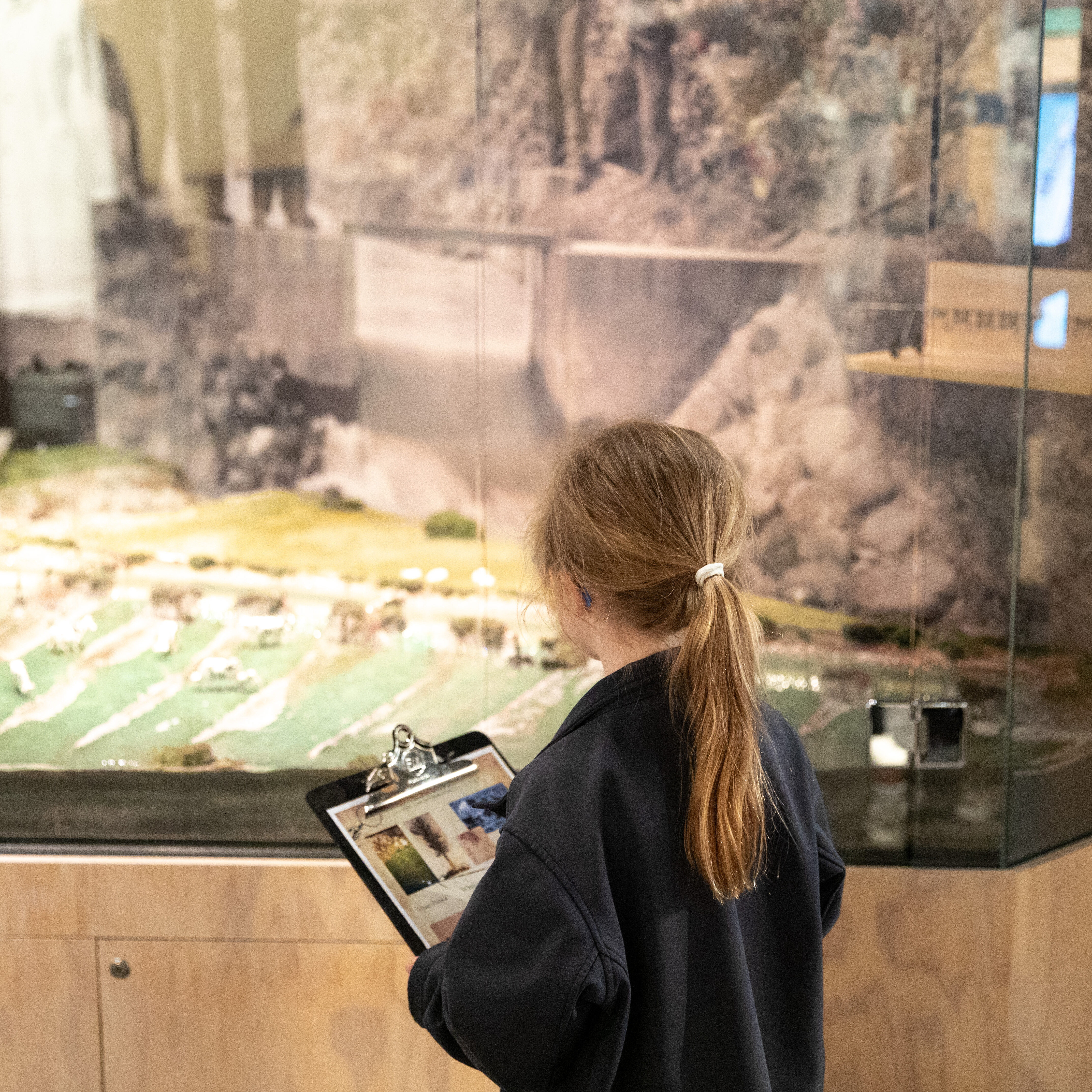
Liquid Gold: Water
Water has had a huge impact on all aspects of the Canterbury Plains Kā Pākihi-whakatekateka-a-Waitaha. Learn about and explore how water has moved throughout the district.
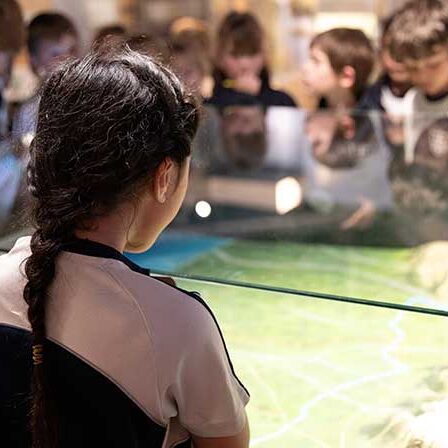
Working the Land: Economic Development
The evolution of Ashburton town was swift. Learn about the people who built their dreams here.
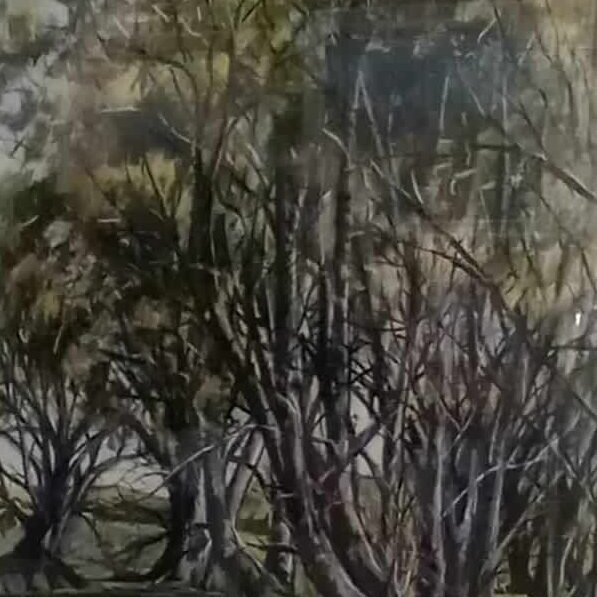
Exploring Drawing
Charcoal | Pencil | Pen + Wash
Taking inspiration from artworks in our collection such as Trees, Kakahu River by D. Waddington, explore a variety of drawing mediums and techniques.
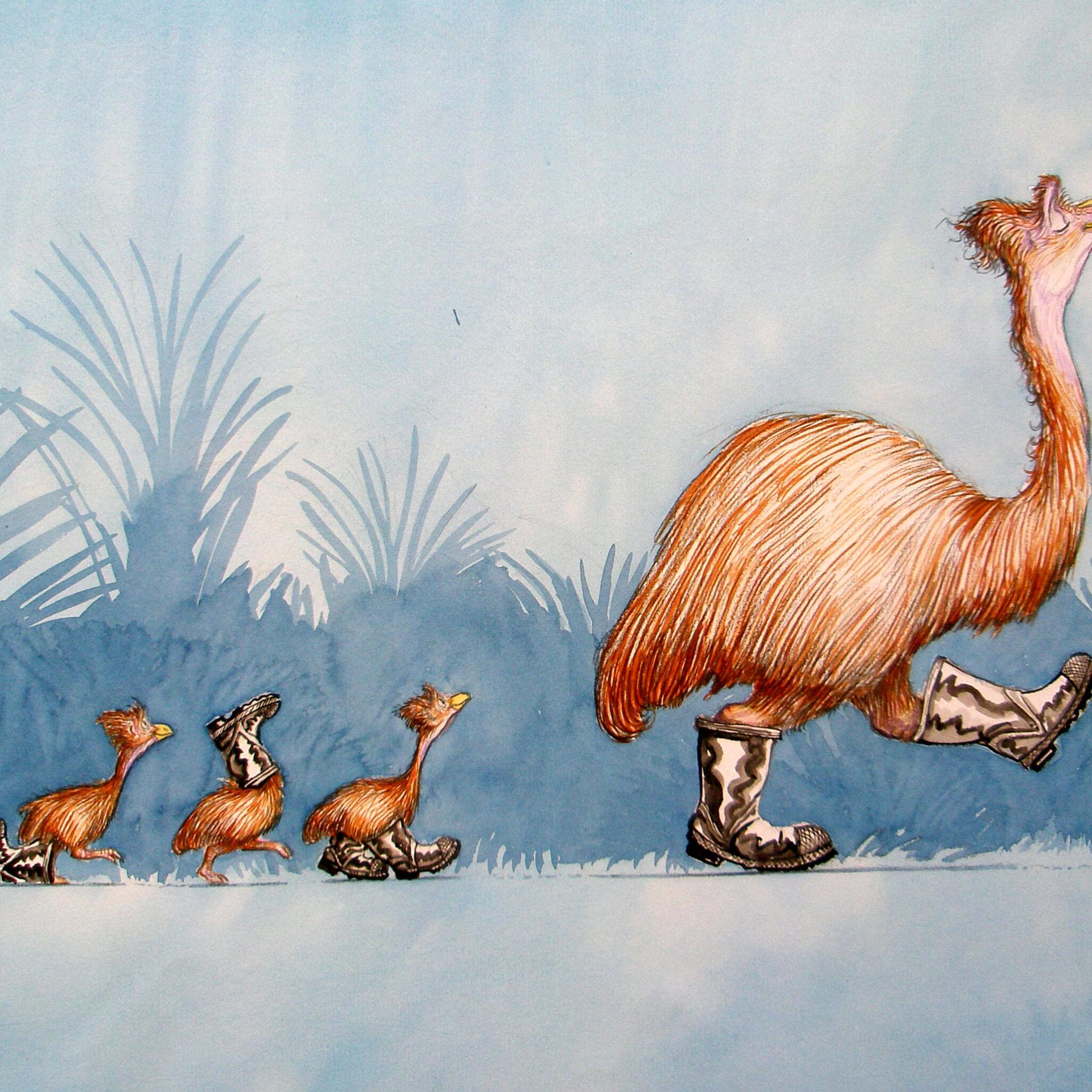
David Elliot Style Illustration
Watercolour
Learn about how David Elliot’s animals and fantastical creatures come to life on paper with imagination, expressive strokes and
subtle colour combinations as we see here in Cover illustration - 100 New Zealand Poems for Children by David Elliot.

Exploring Printmaking
Intaglio | Woodcut | Screenprint | Lithograph
A selection of prints from our collection, including Many Uncoded Factors by Michael Armstrong which showcase and highlight different types of printmaking. Start a printmaking journey making monoprints. This can lead on to printmaking workshops.

Experimenting with Paint
Oil | Acrylic | Watercolour | Mixed Media
Experiment with various painting approaches and media through looking at paintings from our collection like Rain Man Over Ashburton by Euan Macleod.
Tell us your interests
Do you have an idea for a learning programme at Ashburton Art Gallery and Museum?
Our educator can design a creative learning experience tailored to the needs and interests of your early childhood, primary and secondary school groups. Simply, contact us with your idea and we will work together to create a programme for your students.
Planning a visit
Materials:
All materials for workshops at the Gallery and Museum and at schools will be provided unless stated otherwise. School visits will require schools to provide a projector and full classroom space.
Ratios:
For visiting the Gallery and Museum, we recommend organising an adult to student ratio of:
– 1:5 for Years 0-3
– 1:8 for Years 4-8
– 1:15 for Years 9-10
– 1:30 for Years 11-13
If would be helpful if teachers are able to carry a class register in the case of an emergency.
Arriving at the Gallery and Museum:
The Ashburton Art Gallery and Museum is located on 327 West Street. The Gallery is situated on the first floor and the Museum is on the ground floor. If you are planning to arrive before 10:00am, please inform a Gallery and Museum staff member so they are able to let you into the building. The doors automatically open at 10:00am. For everyone’s enjoyment please ensure that students demonstrate respect to our other visitors.
Help us protect the exhibitions at the Gallery and Museum:
If possible we would advise leaving bags at school, however, if necessary bags can be left in the Learning Centre on arrival. Food and drink are not permitted in the Gallery and Museum spaces. However, food can be consumed in the Learning Centre area if needed. No pens or sharp objects are allowed in the Gallery and Museum spaces. Please let the Gallery and Museum staff know if you wish to photograph the artwork, teachers are more than welcome to take pictures of their students in the Gallery and Museum spaces and Learning Centre. Please emphasise to students the importance of not touching any artworks or objects on display. We don’t mind talking and noise in the Gallery and Museum but for safety reasons, we do not allow running in the foyer or exhibition spaces.
Risk Assessment and Management (RAMs):
Please download and read.
Publicity:
Gallery and Museum staff love documenting school visits so please advise us if your students do not wish to be photographed.







